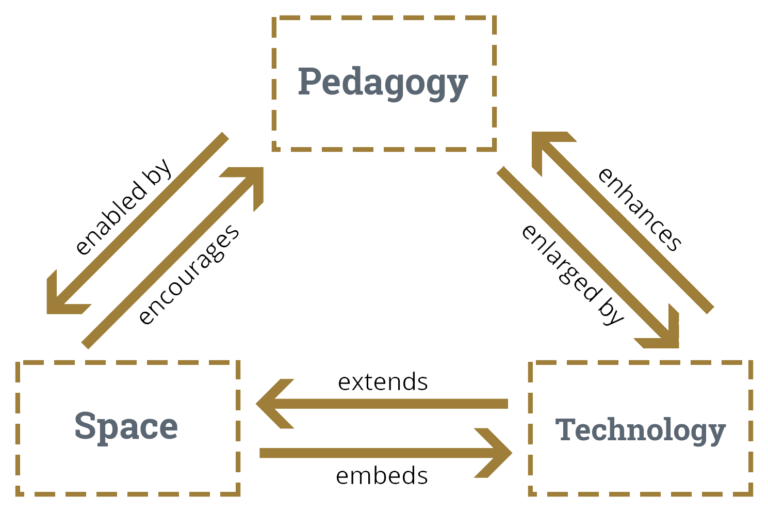Design Process

Student and faculty experiences in well-designed learning spaces can facilitate meaningful pedagogy. Such spaces are “student-centered, interactive, integrated, flexible, active learning spaces” (University of Minnesota, 2009). They can take many forms, but typical features include: 1) movable chairs/tables or tables configured into groupings (often referred to as pods), 2) multiple projection/viewing systems, and 3) multiple whiteboards/writing surfaces.
Often, these spaces strive to accommodate diverse pedagogies and what teaching and learning researchers call high-impact practices and engagement indicators: strategies that encourage faculty-student interaction; peer-learning; flexibility; collaborative projects, activities, and assignments; research and writing; and communal, challenging intellectual experiences. With complimentary pedagogy, such spaces invite students’ active involvement in their own learning.


Step 1: Connection
Contact the Learning Spaces Committee to get started.

Step 2: Conversation
All stakeholders get an opportunity to provide feedback and revision of the proposed design. Your opinion matters.

Step 3: Collaboration and Iteration
It’s time to work together. The LSC meets with users and stakeholders in the space to ensure all needs are met.

Step 4: Recommendation
At the end of this process, we have collaboratively created an evidence-based design recommendation that prioritizes pedagogical needs; flexible instruction and room layout; accessibility for all students; and durability for long-term benefit.

